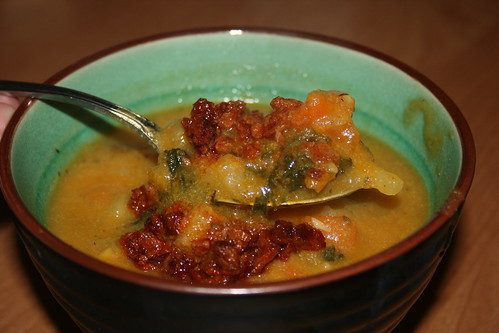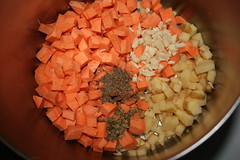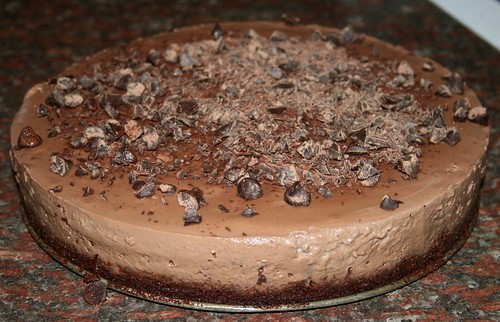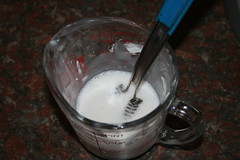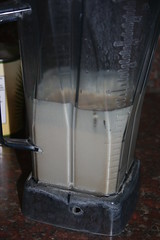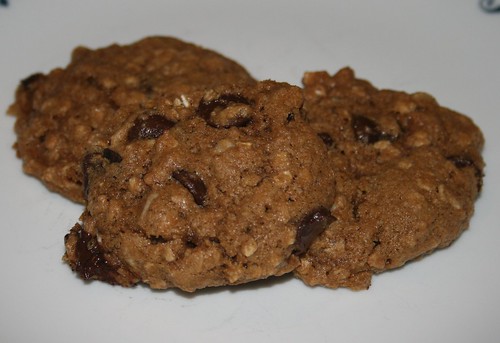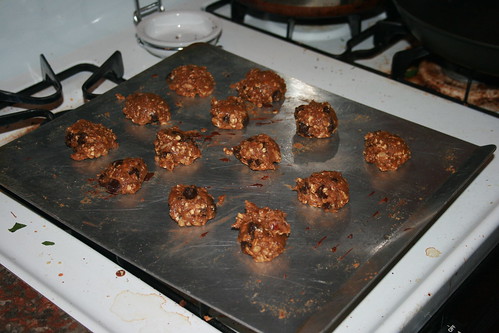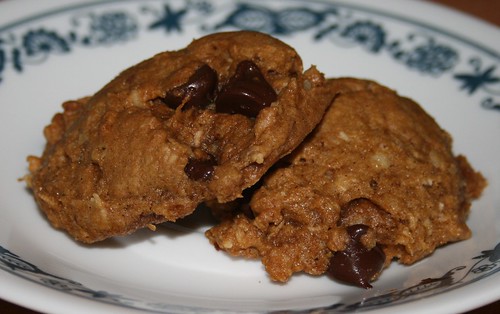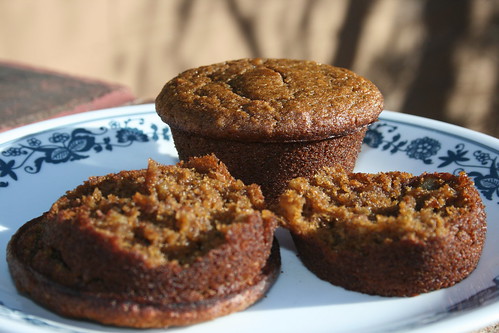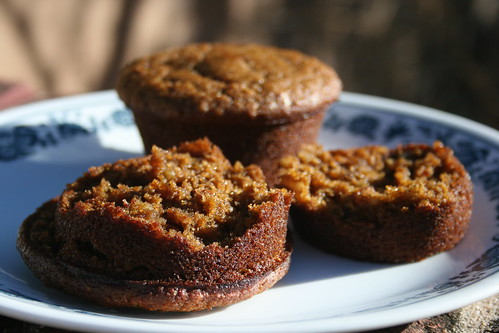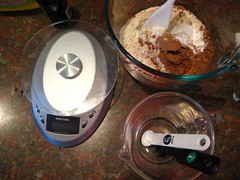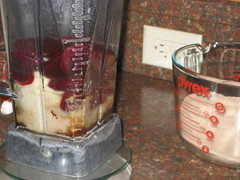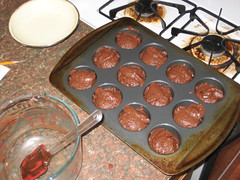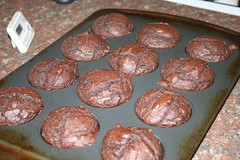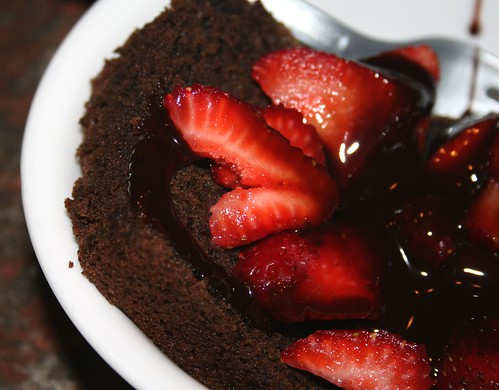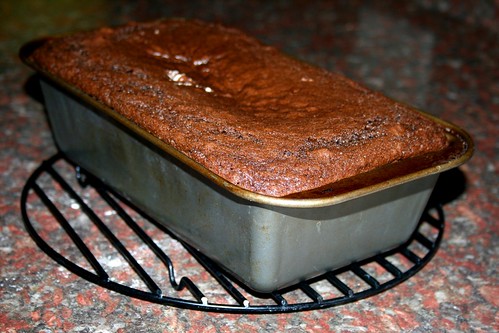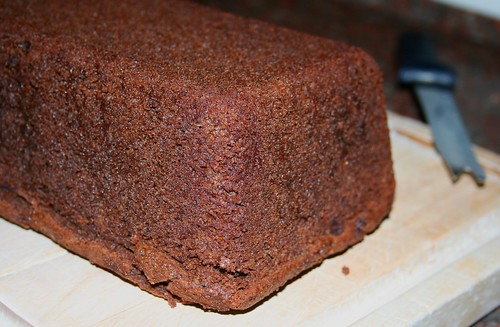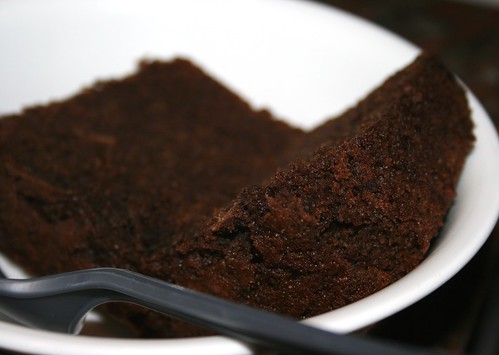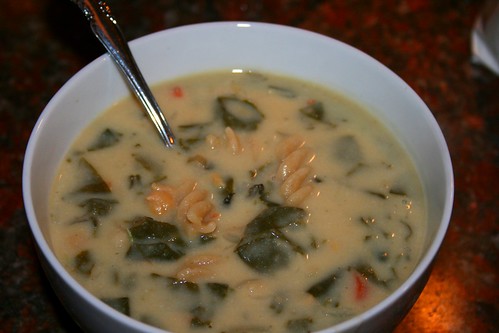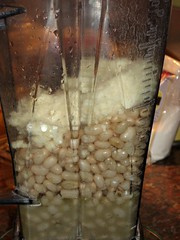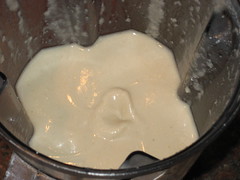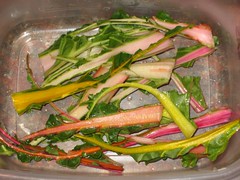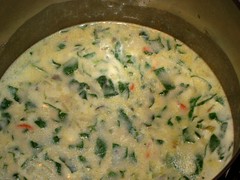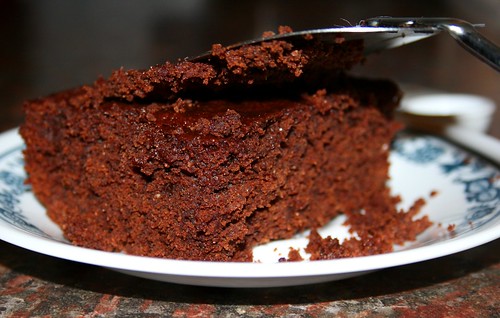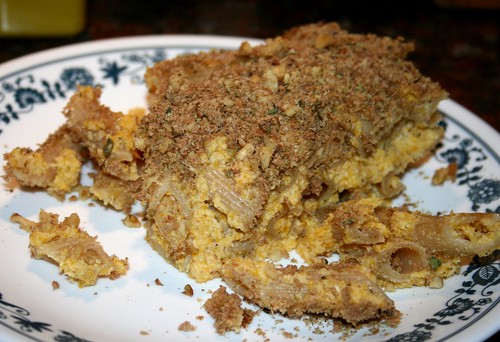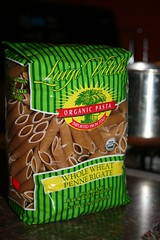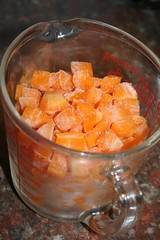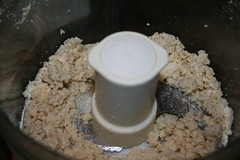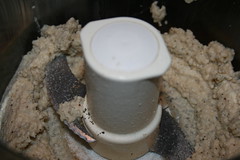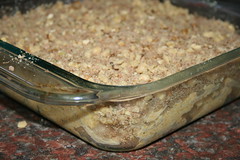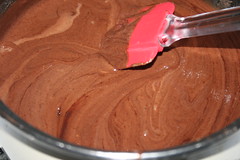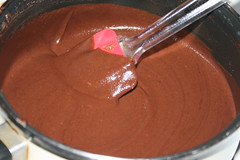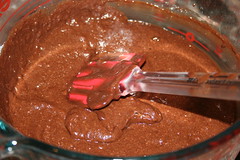You’ve probably heard a lot of hype about soy foods and their alleged ability to reduce risk for cancer or treat menopausal symptoms. You might also have noticed an anti-soy sentiment running through certain corners of the Internet, including claims that the plant estrogens (or phytoestrogens) in soy can have an influence on one’s hormone levels. However, when it comes to the powers of soy – whether these powers are healing or harming – there is currently no scientific consensus. Based on the scientific studies I have read, it seems that soy is probably not the magic tonic some make it out to be; nor does it seem likely to make your endocrine system go haywire. The reason I eat it is because it’s versatile and packed with protein.
Soybeans are a major source of a type of plant estrogen known as isoflavones. Of foods commonly eaten by humans, soy has the highest isoflavone content. According to the
USDA, okara has a mean of 9 mg of isoflavones per 100 grams:

To give perspective, for every 100 grams of a particular item, textured soy flour (aka TVP) contains a mean of 172.6 mg isoflavones; edamame contains a mean of 48.9 mg; silken tofu contains a mean of 18 mg; and legumes such as lentils and navy beans contain less than a milligram of isoflavones. Among the nuts listed, raw pistachios have the highest isoflavone levels, with a mean of 3.63 mg for every 100 grams.
There are 12 isomers of isoflavones, including genistein and daidzein. On a molecular level, their chemical makeup resembles that of the human hormone estrogen and can bind to estrogen receptors, although according to
Hooper et al. their binding affinity is much lower than that of the estrogens made by one’s own body. Some experiments have shown isoflavones to have estrogenic effects under certain conditions, which raises the question: Can soy have special physiological effects on humans (either adverse or beneficial)? (
Messina, access required)
Isoflavones from soybeans are sometimes said to have “feminizing” effects on men, as well as effects on their fertility. According to
Hamilton-Reeves et al. (2007), while quite a bit of research has been done into the effects of soy consumption on hormone levels in human subjects, the results of these studies have been inconsistent, but the majority have not found significant changes in levels of steroid sex hormones.
A
2009 systematic review and meta-analysis found that soy consumption by premenopausal females did not affect concentrations of estradiol, estrone, or sex-hormone binding globulin, but did seem to reduce follicle stimulating hormone and luteinizing hormone, and increase the length of menstrual cycles (by an average of just over one day). It was unclear if these changes indicated an estrogenic or anti-estrogenic effect. However, all studies under review were considered at risk for bias. When the numbers were crunched in another way, it appeared that soy’s seeming effect on follicle stimulating hormone was still significant, but effects on luteinizing hormone and menstrual cycle length were no longer significant. In post-menopausal females, soy consumption did not seem to have any effect on any of these hormones; in peri-menopausal females, much less research had been done but there also did not seem to be significant effects on hormone levels (
Hooper).
Because of the extremely tentative nature of these findings and several reminders from the authors about the preponderance of studies at risk for bias, even a robust analysis such as this one should be taken with a grain of salt. (And people who don’t produce follicle stimulating hormone or luteinizing hormone probably don’t have to be concerned either way about these particular results.)
A
2009 meta-analysis (access required) examined whether isoflavone consumption by male subjects had estrogenic properties by determining if intake correlated with testosterone levels, sex-hormone binding globulin levels, or free androgen index. After crunching the numbers a couple of different ways, no correlation could be found.
A 2010 review of the literature finds that soy isoflavones (as supplements or in soy foods) have no impact on testosterone or estrogen levels in humans. There also does not seem to be effects on sperm, though studies into this question have been short-term; likewise, claims that isoflavones can cause erectile dysfunction seem to be based on methodologically flawed animal studies. Finally, despite reports that soy can adversely affect the thyroid, there is “essentially no evidence” that this is true, at least in healthy subjects (
Messina, access required).
Some early documentation of fertility problems were in non-human animals such as sheep and monkeys. One problem inherent in animal studies is that what is true for one mammal might not be true for humans; for instance, there is variation between species in how isoflavones are metabolized and the type of response they induce. Infant marmoset monkeys given soy formula, for example, converted daidzein into equol (which can be 100 times as potent and might affect testosterone levels); however, human babies probably do not metabolize isoflavones into equol (adults might, but only if their intestines are colonized with the appropriate bacteria). Additionally, rodent studies focused on administering purified daidzein, rather than soy foods or products with the full complement of isoflavones (
Messina, access required).
One problem in determining the effect isoflavone consumption has on human subjects is that metabolism of soy varies from individual to individual. A person’s genetics can influence what isoflavones and metabolites thereof circulate in the bloodstream after digestion. Furthermore, the type of bacteria that colonize a subject’s intestine determine whether or not daidzein is converted to the more biologically active metabolite equol (
Hamilton-Reeves 2009, access required).
According to Hamilton-Reeves (2009), only 25 to 35 percent of Westerners have such bacteria; according to Messina, 50 percent of Asians have these bacteria. The “equol hypothesis” holds that isoflavones have different effects on people whose gut flora are able to produce equol (Hamilton-Reeves 2009).
The Internet is rife with frightening statements about soy, and despite the fact that they often arise from sources of dubious credibility, the sheer number of such claims creates a thundering chorus. Although you can find plenty of anti-soy fear-mongering on the Internet, perusing the peer-reviewed literature on soy makes me skeptical that it has many of the powers attributed to it by its proponents or detractors.
Patisaul and Jefferson sum it up best when they say, “alarm over soy products is likely unnecessary but so is the belief that a soy-rich diet will alleviate all ills.” Non-allergic people should be able to eat soy safely. If someone is truly concerned about the effects soy might have on hormone levels, he or she might want to follow the precautionary principle and limit especially dense sources of isoflavones in the diet, but the occasional burst of concentrated isoflavones seems unlikely to have a chronic effect on one’s hormone levels.

